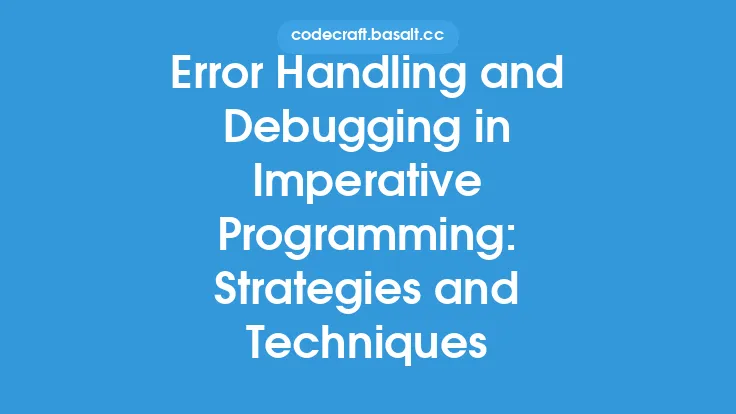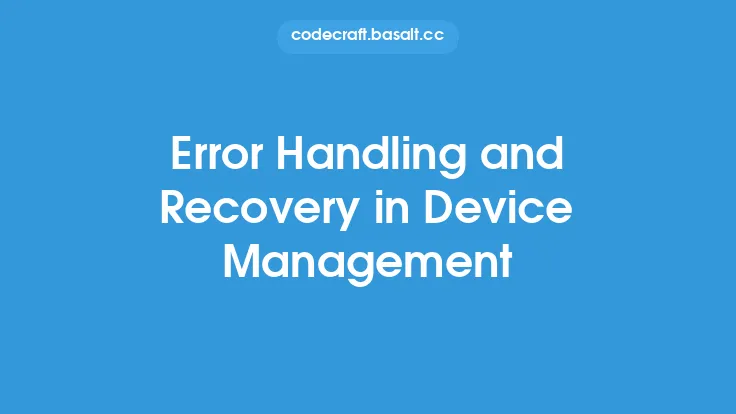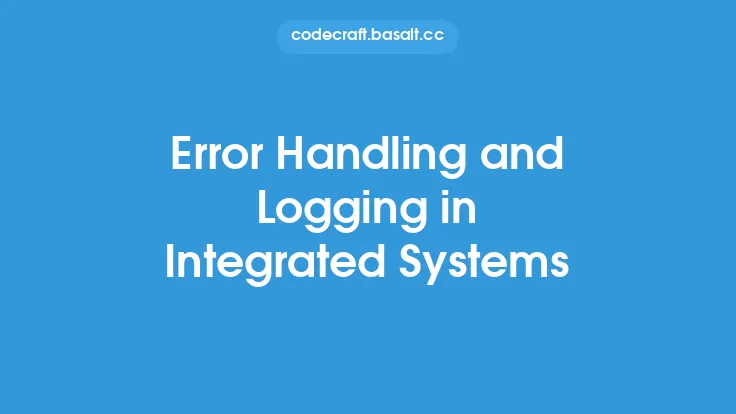Interrupt handling is a crucial aspect of operating system design, as it enables the system to respond to external events and manage the flow of data between hardware devices and the CPU. At its core, interrupt handling involves a set of mechanisms and techniques that allow the operating system to temporarily suspend the execution of the current process, service the interrupt, and then resume execution. In this article, we will delve into the details of interrupt handling mechanisms and techniques, exploring the various approaches used to manage interrupts and ensure efficient system operation.
Introduction to Interrupt Handling
Interrupt handling is a complex process that involves several key components, including the interrupt controller, the interrupt service routine (ISR), and the operating system's interrupt handling mechanism. The interrupt controller is responsible for receiving interrupt requests from hardware devices and sending them to the CPU. The ISR is a specialized routine that is executed in response to an interrupt, and is responsible for servicing the interrupt and restoring the system to a stable state. The operating system's interrupt handling mechanism provides the framework for managing interrupts, including interrupt prioritization, interrupt masking, and interrupt handling.
Interrupt Handling Mechanisms
There are several interrupt handling mechanisms that are commonly used in operating systems, including interrupt polling, interrupt-driven I/O, and interrupt-based scheduling. Interrupt polling involves periodically checking the status of hardware devices to determine if an interrupt has occurred. This approach can be inefficient, as it requires the CPU to continuously poll the devices, even if no interrupts have occurred. Interrupt-driven I/O, on the other hand, involves using interrupts to signal the completion of I/O operations. This approach can be more efficient, as it allows the CPU to focus on other tasks while waiting for I/O operations to complete. Interrupt-based scheduling involves using interrupts to schedule tasks and manage the flow of data between hardware devices and the CPU.
Interrupt Prioritization Techniques
Interrupt prioritization is a critical aspect of interrupt handling, as it ensures that the most critical interrupts are serviced first. There are several interrupt prioritization techniques that are commonly used, including static prioritization, dynamic prioritization, and interrupt nesting. Static prioritization involves assigning a fixed priority to each interrupt, based on its relative importance. Dynamic prioritization, on the other hand, involves assigning priorities to interrupts based on the current system state. Interrupt nesting involves allowing interrupts to be nested, or stacked, to allow for more efficient interrupt handling.
Interrupt Masking Techniques
Interrupt masking is a technique that is used to temporarily disable interrupts, allowing the system to perform critical operations without interruption. There are several interrupt masking techniques that are commonly used, including global interrupt masking, local interrupt masking, and interrupt masking using registers. Global interrupt masking involves disabling all interrupts, while local interrupt masking involves disabling interrupts for a specific device or routine. Interrupt masking using registers involves using specialized registers to mask interrupts, allowing for more efficient interrupt handling.
Interrupt Handling in Multiprocessor Systems
Interrupt handling in multiprocessor systems is more complex than in uniprocessor systems, as it requires coordinating interrupt handling across multiple CPUs. There are several approaches that are commonly used, including symmetric interrupt handling, asymmetric interrupt handling, and distributed interrupt handling. Symmetric interrupt handling involves using a single interrupt handler to manage interrupts across all CPUs. Asymmetric interrupt handling involves using a separate interrupt handler for each CPU. Distributed interrupt handling involves distributing interrupt handling across multiple CPUs, using a combination of symmetric and asymmetric approaches.
Real-World Applications of Interrupt Handling
Interrupt handling has a wide range of real-world applications, including embedded systems, real-time systems, and high-performance computing. In embedded systems, interrupt handling is used to manage interrupts from hardware devices, such as buttons, sensors, and actuators. In real-time systems, interrupt handling is used to ensure that critical tasks are executed in a timely manner, even in the presence of interrupts. In high-performance computing, interrupt handling is used to manage interrupts from high-speed devices, such as network interfaces and storage devices.
Best Practices for Implementing Interrupt Handling
There are several best practices that should be followed when implementing interrupt handling, including minimizing interrupt latency, using interrupt prioritization, and avoiding interrupt nesting. Minimizing interrupt latency involves reducing the time it takes to service an interrupt, to minimize the impact on system performance. Using interrupt prioritization involves assigning priorities to interrupts, to ensure that the most critical interrupts are serviced first. Avoiding interrupt nesting involves avoiding the use of nested interrupts, to prevent interrupt handling from becoming too complex.
Conclusion
In conclusion, interrupt handling is a critical aspect of operating system design, as it enables the system to respond to external events and manage the flow of data between hardware devices and the CPU. By understanding the various interrupt handling mechanisms and techniques, including interrupt prioritization, interrupt masking, and interrupt handling in multiprocessor systems, developers can design and implement efficient and effective interrupt handling systems. By following best practices, such as minimizing interrupt latency and using interrupt prioritization, developers can ensure that their systems are able to handle interrupts in a timely and efficient manner, even in the presence of complex and demanding workloads.





